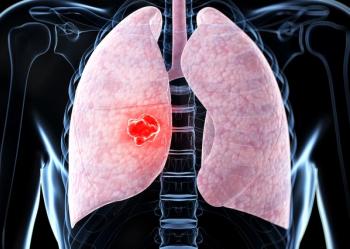
- ONCOLOGY Vol 27 No 2
- Volume 27
- Issue 2
"OMG, How Long Is This Going to Take?"
It is hard to realize that an elderly patient's visit to you is likely the only trip outside his or her apartment for the week and the only contact with someone other than family or an aide. Doctor visits sometimes become the elderly's primary contact with the larger world.
As the article in this issue by Latta and colleagues argues, the decision to treat very old elders for diffuse large B-cell lymphoma (DLBCL) should ideally be made following a comprehensive functional assessment (CFA). However, because of the time a CFA will take on a busy day, the physician usually dreads the visit at which one is to be performed-despite the fact that a better clinical decision will result. Meanwhile, the patient is dreading the discussion for different reasons-because the need to undertake a treatment for cancer raises frightening questions, such as “can I still stay in my apartment?” or “is it the nursing home for me now?” The issue becomes how to conduct the visit in a reasonable time frame, while still being sensitive to the patient's fears and concerns. It is a tall order, but getting it right is critical in geriatric oncology.
It is hard to realize that an elderly patient's visit to you is likely the only trip outside his or her apartment for the week and the only contact with someone other than family or an aide. Doctor visits sometimes become the elderly's primary contact with the larger world, and hence, they take on importance beyond the medical factors, and beyond what you might be able to imagine as a healthy, active person with many different activities in a week. When elders leave the doctor's office feeling humiliated or demeaned because they sense a negative attitude about their age or disabilities, it carries over sometimes to their view of themselves. However, when they leave the visit feeling supported and cared for, the good feelings also persist far beyond the visit. Thus, attention to the “human” side of care is never more important than with these vulnerable “old old” elders.
What is the key to “making their day”? Your show of patience coupled with kindness is the formula that conveys you care about them as persons. It does not take long to convey that attitude of caring. Greet the patient with warmth and address him or her as “Mr./Mrs. Green”-rather than by first name-thus showing respect for this person who is likely twice your age. And if the patient has trouble hearing, make the effort to speak more slowly and in a louder voice, checking often to make sure what you've said has been understood. Patients also feel secure when you make it clear that you will be there for them to get them through their treatment. Kornblith and colleagues did a study for Cancer and Leukemia Group B in which, once a month (between doctor visits), elders who were receiving chemotherapy were telephoned. Although the calls only monitored the patients' level of distress, the investigators found that the patients' levels of anxiety and depressive symptoms actually went down, compared to the control group. When the study participants were asked what was good about the calls, the answer was simple: “It meant someone from the office cared about me between the visits.”
The real payoff comes when you take a few minutes to truly converse with a few of your elderly patients. You will be surprised by how they come alive as they talk about politics, or something else they are interested in. The reward for you is to see aging in a different and more hopeful light.
So ask your assistant to set aside a little extra time when you see your next elderly patient who should have a comprehensive funtional assessment-first of all so that you can conduct the assessment needed to make the right decisions, but also so that the two of you can attain a sense of mutual respect and collaboration as partners in the treatment that is about to begin. You will both be rewarded!
Articles in this issue
almost 13 years ago
Rationing Healthcare: Who's Responsible?almost 13 years ago
Intraoperative Radiotherapy for Breast Cancer: Deceptively Simple?almost 13 years ago
Diffuse Large B-Cell Lymphoma in the Elderly: Leaving Our Old Way(s) Behind?almost 13 years ago
When Can R-CHOP Not Be Used in an Elderly Patient?almost 13 years ago
Intraoperative Radiotherapy for Breast Cancer: Its Perceived Simplicityalmost 13 years ago
Financial Toxicity, Part I: A New Name for a Growing ProblemNewsletter
Stay up to date on recent advances in the multidisciplinary approach to cancer.

















































































